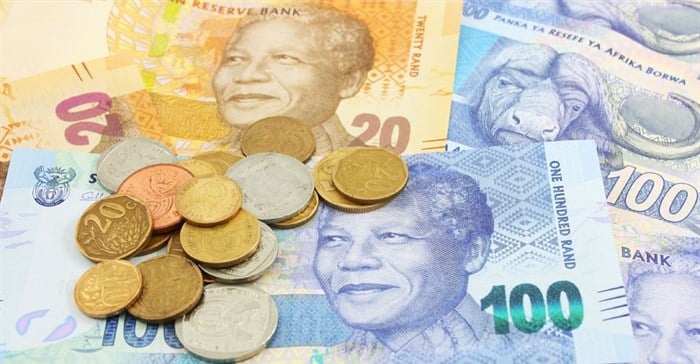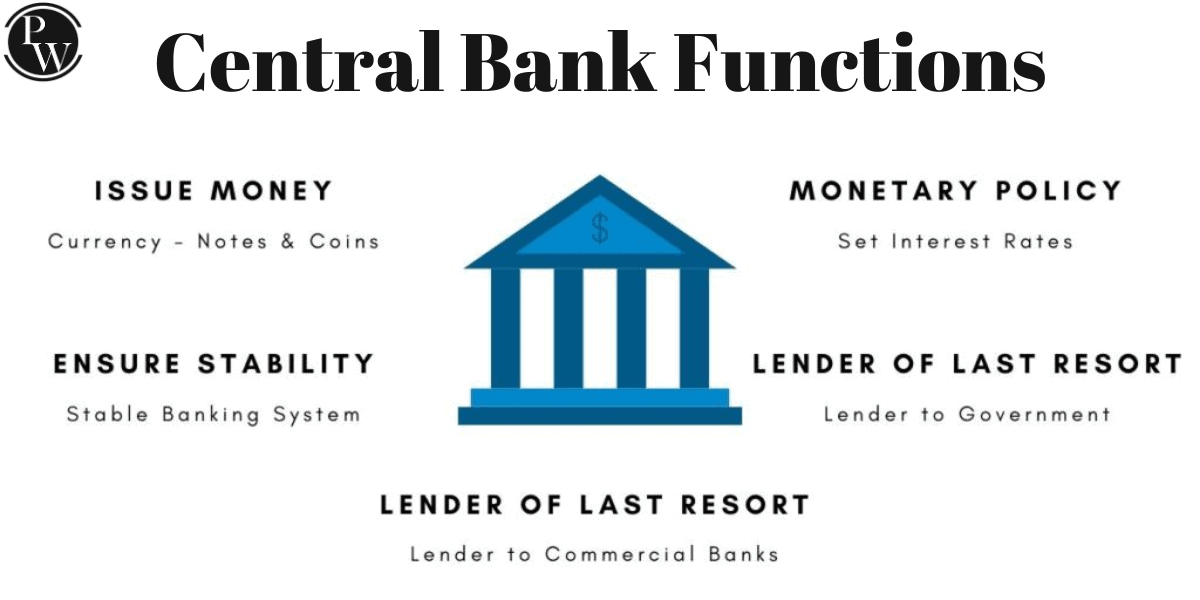Central bank role in economy isn’t just a phrase; it’s the backbone of financial stability and growth. I’ve sifted through the complex world of monetary maestros to shed light on their true influence. They steer growth, manage inflation, and your savings rely on their wisdom. Keep reading to uncover how these silent giants wield their power to shape our everyday lives.
The Pivotal Role of Central Banks in Managing the Economy
Steering Growth Through Monetary Policy
Central banks lead the charge for a country’s economic health. They are like captains of a ship—navigating through stormy seas of financial crises. With a powerful tool called monetary policy, they aim for growth.
What is monetary policy? Simply put, it’s how central banks manage money flow. They do this to keep the economy growing just right—not too fast or too slow.
Balancing Act: Inflation Control and Interest Rate Manipulation
As experts in this complex dance, we know one misstep can upset the whole rhythm.
How do central banks control inflation? They adjust interest rates. Think of it as a dial on the economy’s engine. Turn it up, things heat up. Turn it down, things cool off. The goal is steady growth without prices spiking or dipping too much.
Why mess with interest rates? It’s key to influencing how much you and businesses spend. Lower rates mean cheaper loans, which can lead to more spending and jobs. But too low, and money’s value might drop, causing prices to rise. That’s inflation rearing its head.
To stop inflation from galloping away, central banks might hike up interest rates. Sure, loans get pricier, but it also slows spending just enough. This balancing act keeps the economy stable.
You give central banks a critical duty: manage your money wisely. Their choices affect everything. From your daily coffee to the global complex finance stage. It’s a huge task with everyone’s eyes on it.
Their independence from politics lets them work without unwanted pressure. This lets them make tough calls for the good of your money and jobs. The central bank’s role is vital to keep the economy kicking and alive.
In the simple worlds of a ship at sea, the central bank watches over the economy. It steers the monetary policy wheel, aiming for clear skies and calm waters. Next time when you hear about rate changes, remember, it’s all to keep your economic ship afloat.
Central Banks as Pillars of Stability and Trust
The Essential Function of Currency Stability
Central banks work hard to keep our money stable. Think of them like guards. They fight off the monster of inflation that eats the value of our cash. They adjust interest rates and control how much money flows in our country.
When prices rise too fast, they step on the brakes. This helps people buy things without prices changing too much. Keeping money stable is key for businesses and families to plan for the future without big surprises.
Lender of Last Resort: Financial Crisis Firewall
In tough times, central banks are the heroes we count on. They lend money to banks struggling to keep afloat. This keeps the banks running and protects our cash.
When banks face a storm, the central bank opens its vault. It makes sure banks can lend to us. We trust the central bank to always be there. It’s like a strong wall keeping the scary waves of a financial crisis at bay.
By offering this safety net, central banks keep the whole economy moving. They help banks, so our jobs and lives are safer. Remember, without a central bank ready to step in, a small bank problem could become a giant mess for everyone.
Central banks are strong towers of trust in our economy’s landscape. They stand firm, keeping our money safe and our economy steady.
The Complex Toolkit of Central Bank Functions
Mastering the Money Supply: From Quantitative Easing to Reserve Requirements
Central banks wear many hats, each critical in shaping our economy. They can seem like magicians with complex tools at their fingertips, but there’s more skill than magic at play. One toolkit item is how they control the money we all use. When they feel the economy needs a boost, they use a trick called quantitative easing. This means buying lots of stuff, usually government debt, to pump cash into the banking system. It’s like adding logs to a fire to make it burn hotter.
Have you ever wondered how your bank can lend out much more than it seems to have? It’s another central bank function. The trick is called bank reserve requirements. Central banks dictate a minimum amount that banks must keep in reserve. Banks can only lend out what’s left. The less they have to hold, the more they can lend out to folks like you and me.
Now, let’s think about savings. Why does the saving account interest rate go up and down? That’s also central banks’ doing. They manipulate interest rates to control spending. When rates drop, we’re more likely to borrow and spend. When rates rise, we tend to save more and spend less.
Central banks also serve as the government’s bank and guide for big money decisions. They are the economic advisors who whisper in the government’s ear. These banks are a safe place to turn to in tough times, much like a lender of last resort for other banks.
Banks are like kids who need a watchful eye. That’s why central banks supervise them. They regulate the financial system, keeping an eye out for risky business that could lead to trouble. They also control the flow of credit, making sure that the financial markets don’t turn into a lending free-for-all.
Now, could you just start printing more money if things get tough? Well, central banks can, but they do it wisely. They’re in charge of currency issuance. This means keeping our money worth something by not letting too much of it loose in the economy. If too much money chases too few goods, prices soar, and we get inflation. The goal is always price stability, keeping the cost of living predictable.
Central banks make sure money is flowing smoothly and that banks can lend to each other. This is done through overnight lending rates and interbank lending. Think of it as banks borrowing a cup of sugar from their neighbors, just that the sugar is money, and the neighbors are other banks.
The Interplay of Central Banking History and Modern Policy Implementation
You may ask, “How long have central banks been at this?” To understand their role today, we must look back at central banking history. The first ones popped up in the 17th century. But the tools they used have changed a lot since then.
They once just focused on making coins and keeping gold safe. Now, they play a big part in managing the economy. This means helping us all get jobs – that’s the full employment goal. It also involves making guesses about where the economy’s headed, called economic forecasts.
Over time, they’ve gotten more freedom from the government. We call this central bank independence. It’s crucial because it means they can make tough calls without political pressure. It helps keep our money safe, so we trust it to buy what we need.
In the end, central banks hold massive power. Their decisions reach far and wide. They help keep cash flowing, prices stable, and banks in check. Now we know a little more about how they move the gears behind our day-to-day lives. No magic – just lots of smart choices and careful-balance acts.
Beyond Borders: The Global Impact of Central Bank Decisions
Financial Markets Stability and Exchange Rate Policy
Central banks play big roles all over the world. They use tools to keep money and trade steady. One key job is to make sure that financial markets don’t crash. Markets are like big shops where people trade stocks and money. When a central bank steps in, it’s like a guard. It watches and keeps things safe.
Stable markets mean good news for everyone. Jobs stay secure, people keep spending, and businesses grow. But how do central banks do it? By changing interest rates, they guide the economy. Like when your teacher helps steer the class. By lending money to banks when times get tough, they act as a safety net.
Currency is the money we use to buy things. It changes in value, just like prices in a shop. When the value goes up and down too much, it’s trouble. It can make things pricey and hurt trade. Central banks aim to prevent this. They adjust rates and sometimes step directly into markets.
Let’s speak about exchange rates. That’s how much one country’s money is worth in another’s. Think of it as a game of tug-of-war. Each side pulls, trying to win. Central banks play this game by buying or selling their own currency. This helps keep their money’s worth in balance with others.
The Future of Money: Central Bank Digital Currencies and Economic Growth
Now, something new is on the horizon. It’s called Central Bank Digital Currency, or CBDC. Think of it like your favorite video game coins but in real life. It’s money, but digital. This can speed up payments and make them more secure. It might even change how we use money!
CBDCs can help an economy grow faster. They can make trading between people and countries easier. Just like how email made sending letters faster. They also give central banks a new way to manage the economy. This can lead to more jobs and a better living for everyone.
But it’s not just about making things quick. Security is also key. When we talk about our money, we want it to be safe. CBDCs will have strong protections. This means fewer worries about theft or fraud.
Imagine this: you wake up, and with a few clicks, you’ve got money in your account. Your bank is the central bank! This could be our future. Fast, safe, and smart money for all.
Experts are watching CBDCs closely. They are learning and planning. If done right, CBDCs can be a big win for everyone. They can make our money work better for us. They promise a bright future where money is quick, easy, and safe for everyone to use.
In this post, we dug into what central banks do to keep our economy strong. They work hard to make sure our money stays stable and to help our economy grow. They use different tools to keep prices fair and make sure banks have enough money. They also step in as a safety net when financial problems hit.
Central banks have many roles that are quite complex. They decide how much money is out there, and they can make money cost more or less to borrow. Their choices touch lives all over the world, from how much we pay for things to how much money we make.
We also looked at how these banks have to think about the future, like new digital money that could change our economy. Central banks are a big deal in our lives, even if we don’t always see it. They help make sure our money is safe and that our economy stays on track. So, it’s good to know they’ve got our backs.
Q&A :
What is the main function of a central bank in an economy?
The primary function of a central bank is to manage the nation’s money supply and interest rates, which in turn influences economic activity. They do this through monetary policy including setting reserve requirements for private banks, conducting open market operations, and acting as a lender of last resort. Central banks also work toward maintaining financial system stability and contain inflation rates to preserve the value of the currency.
How does the central bank influence inflation and unemployment?
Central banks influence inflation and unemployment through their monetary policy actions. By adjusting the interest rates, they can either stimulate economic growth or rein it in. Lower interest rates can encourage borrowing and spending, potentially reducing unemployment, but may increase inflation if the economy overheats. Conversely, higher interest rates can slow down borrowing and spending, aiming to reduce inflation but potentially increasing unemployment if done excessively.
What role does a central bank play in maintaining financial stability?
A central bank is crucial in maintaining financial stability as it monitors and regulates the banking system and acts as a lender of last resort during financial crises. By providing liquidity to banks in distress, the central bank can prevent the failing of financial institutions which in turn protects the economy from widespread panic and potential collapse.
Can central banks create money, and how does it impact the economy?
Yes, central banks have the ability to create money, commonly through a process known as ‘quantitative easing’ where they buy government securities or other financial assets from the market. This increases the money supply and is intended to lower interest rates, stimulate investment, and boost economic growth. However, excessive money creation can lead to too much inflation if not carefully managed.
What is the relationship between central banks and government fiscal policy?
The relationship between central banks and government fiscal policy refers to how they both aim to achieve economic stability, but through different means. Central banks focus on monetary policy, primarily through managing the money supply and interest rates. Meanwhile, the government’s fiscal policy involves changing tax rates and public spending to influence economic activity. Ideally, these two entities work in tandem, with appropriate coordination to ensure cohesive economic management.



